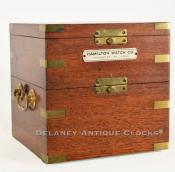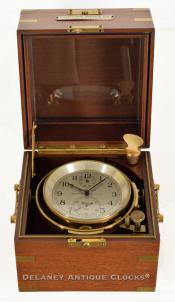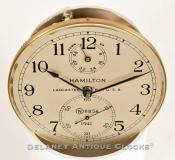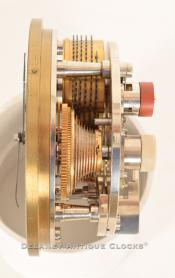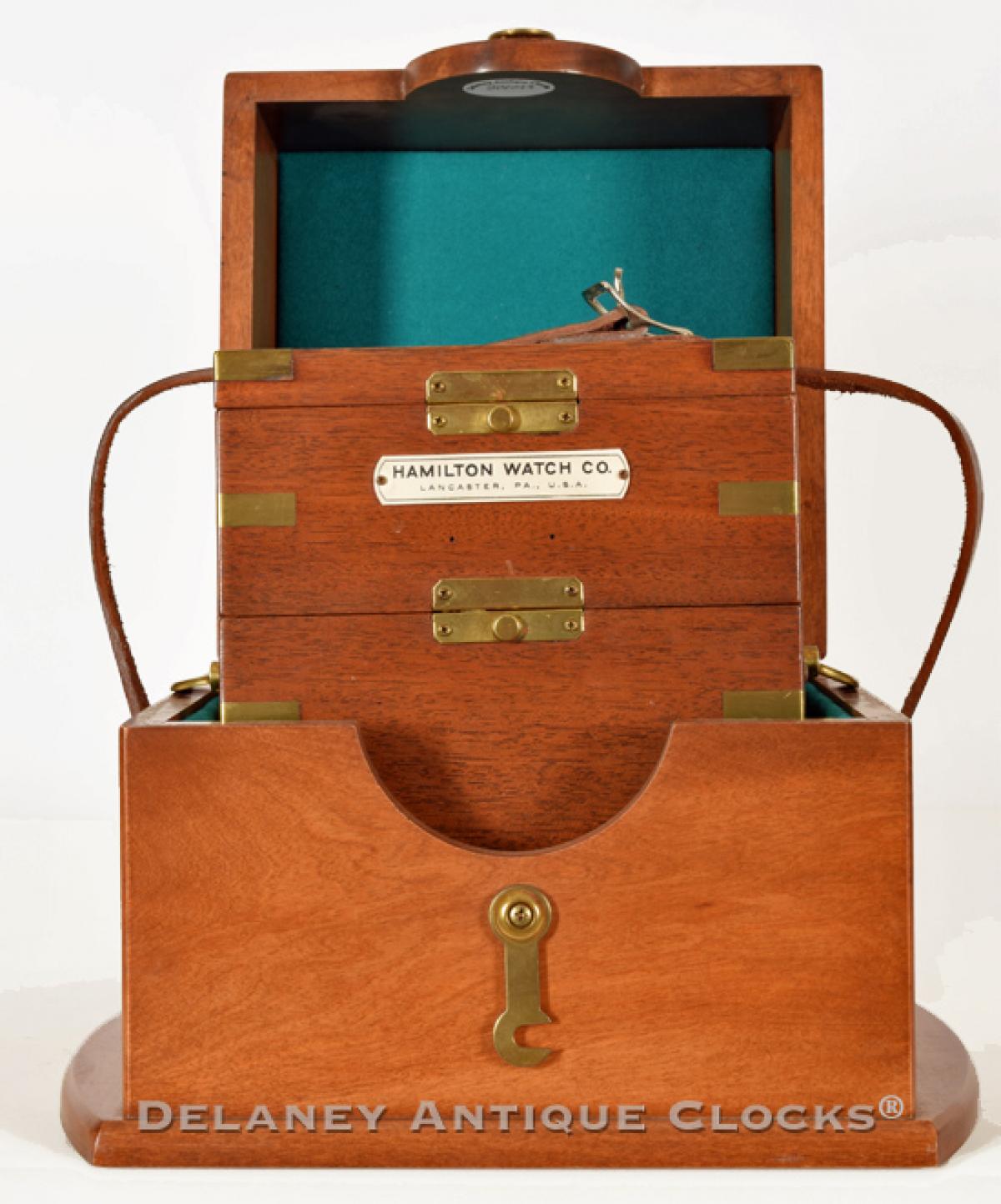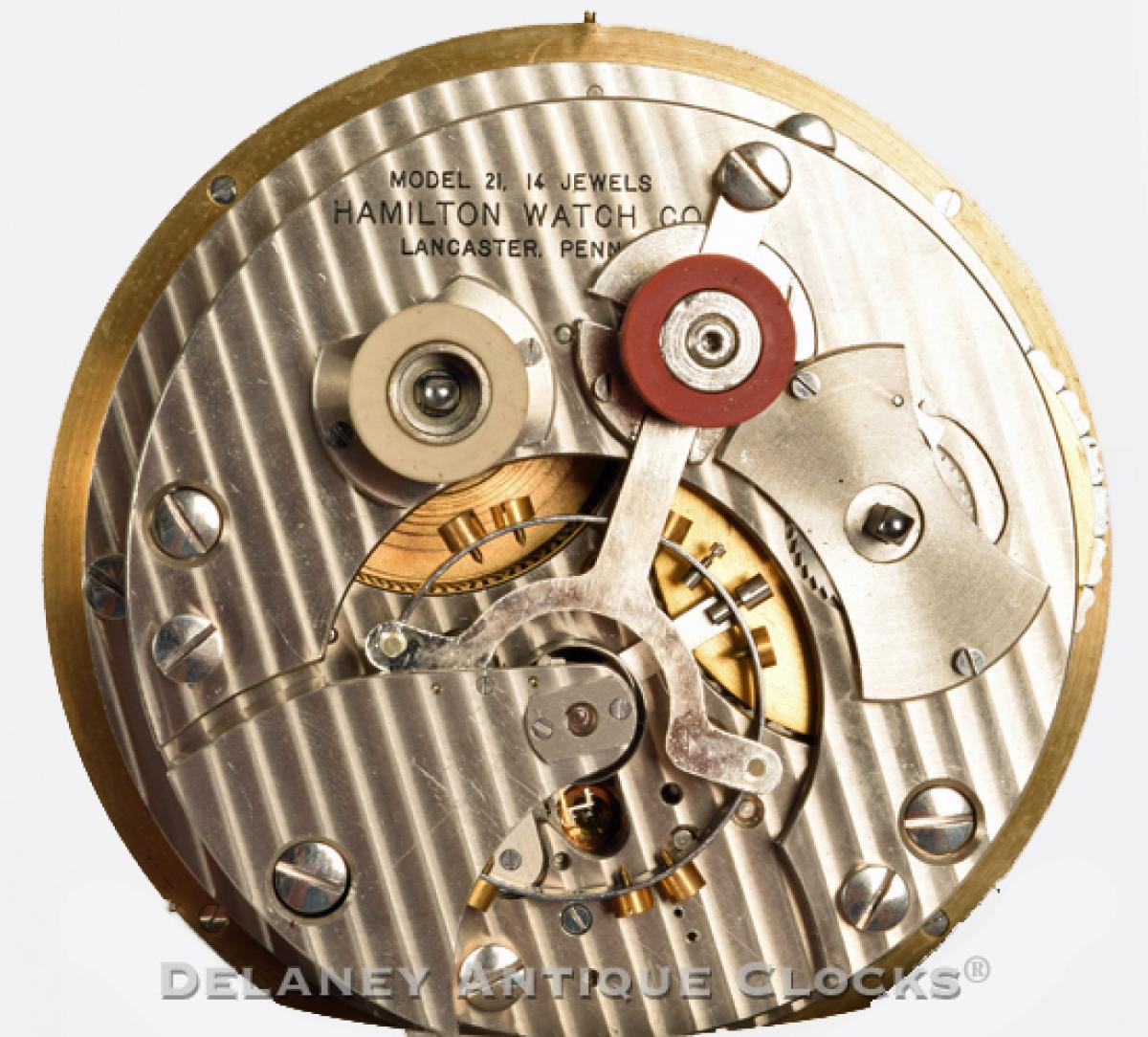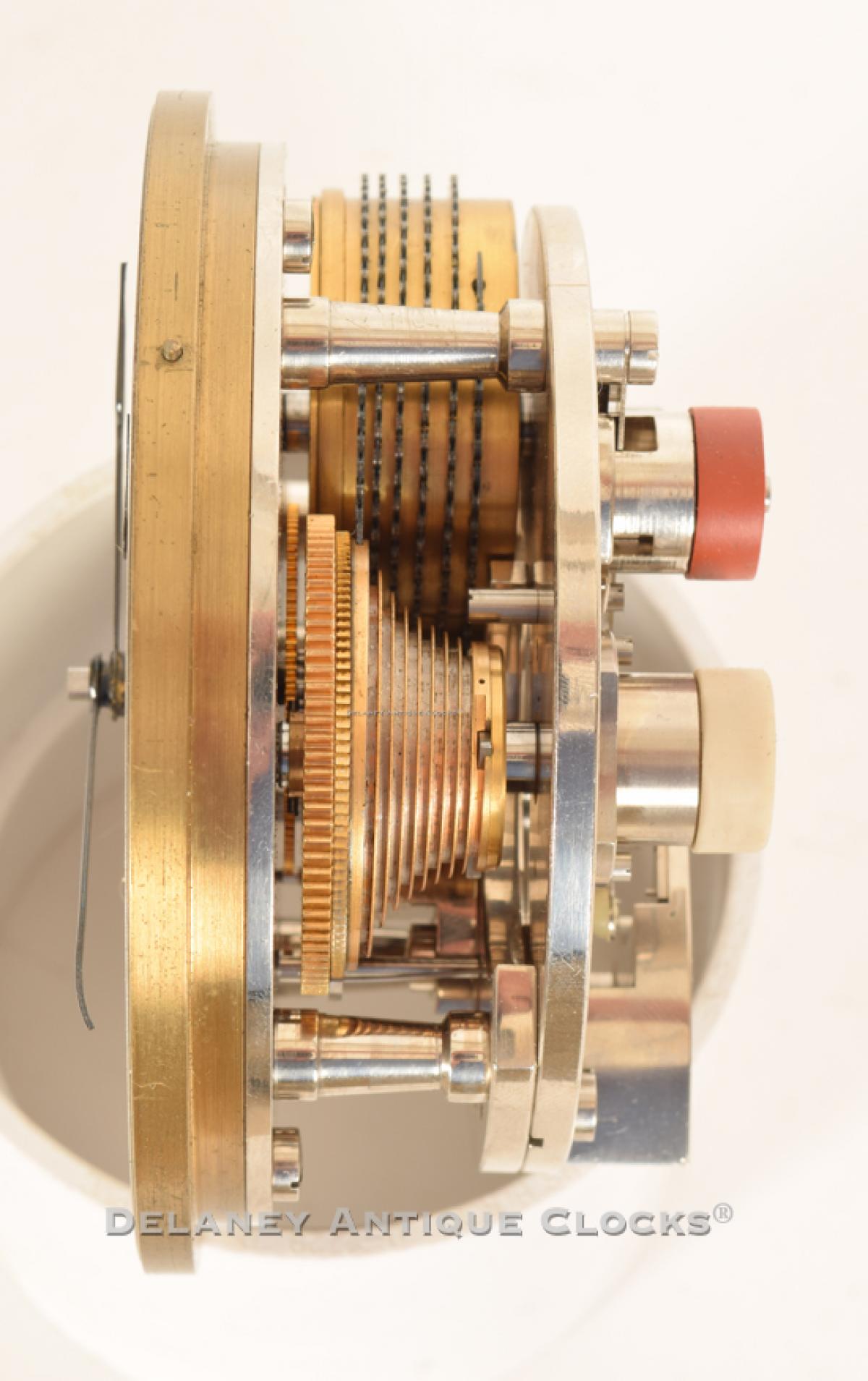A Hamilton Model 21 Two-day Chronometer. No. 8854 made in 1941.
The Hamilton factory was located in Lancaster, Pennsylvania.
This outstanding example features a silvered dial marked with Maker's name (HAMILTON), location (LANCASTER, PA., U. S. A.), numbered (N8856) dated (1941), down \/ up winding indicator and a subsidiary seconds dial. A brass case that is mounted in a gimbal protects the quality movement. The plates are decorated with a robust damascened pattern. The backplate is engraved, " MODEL 21, 14 JEWELS \/ HAMILTON WATCH CO. \/ LANCASTER, PENN." Inside the front plate, the number "2E8854" is stamped. The fusee cone is connected by a nickle chain. The balance is designed with timing screws, a stainless steel rim, an Invar cross arm and a helical hairspring. The works are also designed with maintaining power and an externally operated balance arrest mechanism. The fully gimbaled brass bowl is housed in a three-tiered, brass-bound mahogany box with carrying handles. The box is fitted with a bracket to store the original tipsy key. The original felt-cushioned outer carrying box remains with this example. The interior box measures approximatley 7 & 5\/8 inches high. The outer case is 10 inches high and is secured closed with finger lock and a leather strap.
Prior to World War two, a small number American firms manufactured or more appropriately finished chronometers from parts imported from European makers. Chronometer making was specialization and was still considered a craft. Only a few hundred clocks were produced in this country in any given year.
Anticipating the arrival of war, in 1939 the U.S. Naval Observatory had asked a number of American domestic watch manufacturers to manufacture a marine chronometer that the U. S. Government could purchase. During the first World War, the Americans found themselves at the mercy of the European made instruments. And these were in short supply. They were also concerned that once the war started the export of European parts and finished instruments would be halted. The big firms of Hamilton and Elgin agreed to participate in the program. It was not until 1941 that Hamilton agreed to work on the project. Thirteen weeks after surprise attack at Pearl Harbour, Hamilton delivered two prototypes for review to the Naval Observatory. The Model 21 was warmly received by those who observed its accuracy and ingenuity. Hamilton's design for its Model 21 chronometer did not copy traditional European standards. Instead the design introduced key changes to improve accuracy. The modifications included changes to the escapement and the chronometer's oscillating unitÑthe balance and hairspring assembly. It passed with an error rate of 1.55 seconds per day. It was also capable of being manufactured using assembly line techniques and were therefore quicker and easier to produce in numbers. Within eighteen months, Hamilton had produced 400 chronometers for the war effort and production rose sharply to approximately 500 pieces a month by 1944, they had delivered 10,902 chronometers by the end of the war. Production continued after the war until 1970 when a final total of 13,984 Model 21 chronometers were manufactured.



